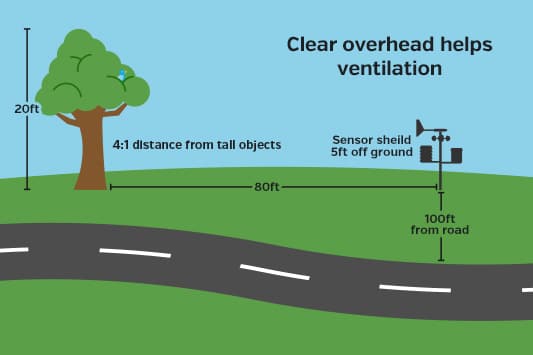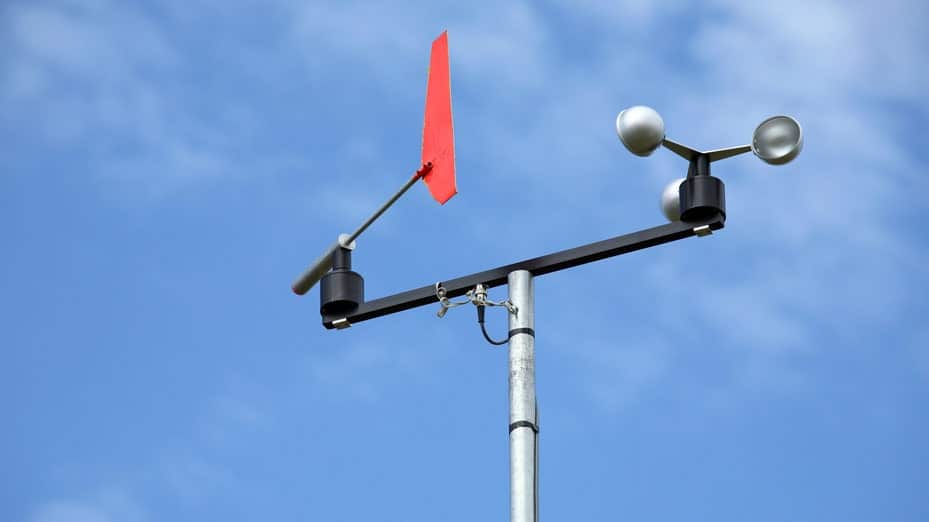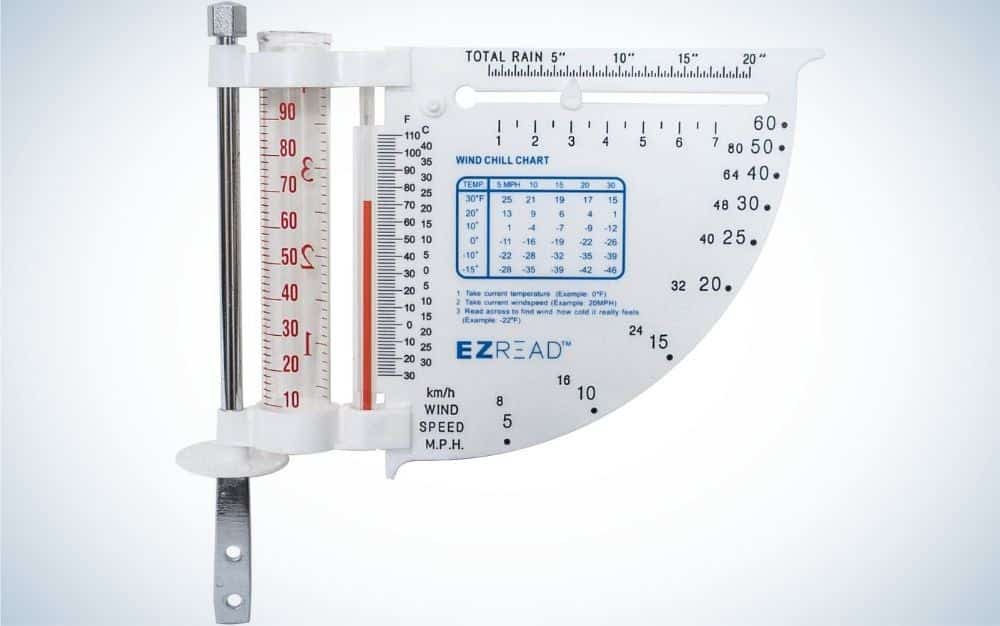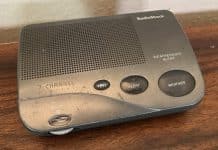If you’re looking for a hassle-free way to monitor the weather from the comfort of your home, finding the most accessible weather station to set up is crucial.
With so many options available, it can be overwhelming to determine which one will offer simplicity without sacrificing accuracy.
In this article, we will explore the top contenders in the market and provide you with all the information you need to make an informed decision.
Whether you’re a weather enthusiast or want to plan your day effectively, discover the best weather station to keep you up and running quickly.
Review contents
Factors to Consider When Choosing a Weather Station
When it comes to choosing a weather station, there are several factors you should consider to ensure you find the one that best suits your needs.
These factors include accuracy, ease of use, installation requirements, wireless connectivity, data logging and transmission capabilities, maintenance, price, and additional features.
By understanding the importance of each factor, you can make an informed decision and find the perfect weather station for you.
Accuracy
One of the most crucial factors to consider when choosing a weather station is its accuracy. The accuracy of a weather station is essential as it determines how reliable and trustworthy the data it provides will be.
Look for weather stations that have been tested and proven to provide accurate readings for various weather conditions. Reviews and recommendations from other users can also give you insight into the accuracy of different weather stations.
Ease of Use
Another essential factor to consider is the ease of use of the weather station. Ideally, you want a weather station that is user-friendly and intuitive, making it effortless to set up and operate.
Look for weather stations that come with clear instructions and an easy-to-navigate interface. Additionally, consider whether the weather station offers a mobile app or online platform that allows you to access and interpret the data easily.
Installation Requirements
Before purchasing a weather station, it’s essential to consider its installation requirements. Some weather stations may require professional installation or dedicated power sources, while others may be more straightforward. Consider factors such as mounting options, power source availability, and sensor placement to determine if a weather station’s installation requirements align with your capabilities and preferences.
Wireless Connectivity
In today’s digital age, wireless connectivity is becoming increasingly important. A weather station that can connect to your smartphone or computer wirelessly allows for convenient monitoring and data access. Look for weather stations that offer wireless connectivity options, such as Wi-Fi or Bluetooth. This ensures that you can easily access real-time weather data even when you’re not within the range of the weather station itself.
Data Logging and Transmission
Weather stations vary in their capabilities regarding data logging and transmission. Some weather stations can store data internally and transfer it to a computer or cloud-based storage, while others may require direct real-time transmission.
Consider whether you prefer a weather station that can store data for future analysis or one that provides immediate access to real-time data. This will help you choose a weather station that aligns with your intended use and data management preferences.
Maintenance
Weather stations require regular maintenance to ensure optimal performance like any other device. Consider the maintenance requirements of each weather station you are considering.
Look for weather stations that are easy to clean and maintain and have replacement parts readily available. This will help ensure that your weather station continues to provide accurate and reliable readings over the long term.
Price
Price is a significant consideration when choosing a weather station. The cost of weather stations can vary significantly depending on their features, accuracy, and brand. While setting a budget is important, it’s equally essential to consider the value you will get for the price.
Look for weather stations that offer a combination of the features you need at a price that fits your budget. Remember, the cheapest option may not always be the best regarding accuracy and reliability.
Additional Features
Weather stations can offer additional features to enhance your weather monitoring experience. Some weather stations may have built-in weather forecasting capabilities, while others may offer compatibility with third-party apps or accessories.
Consider the additional features important to you and ensure your chosen weather station aligns with your requirements and preferences.
Popular Types of Weather Stations
Now that you have a better understanding of the factors to consider when choosing a weather station let’s explore some popular types of weather stations. These types include all-in-one weather stations, wireless weather stations, analog weather stations, and digital weather stations. Each type has advantages and disadvantages, so let’s dive into the details.
1. All-in-One Weather Stations
All-in-one weather stations are comprehensive weather monitoring systems with multiple sensors and instruments.
These weather stations typically measure various weather variables, including temperature, humidity, wind speed and direction, barometric pressure, and rainfall. They offer a complete weather monitoring solution in a single package.
Description
All-in-one weather stations have a central console or display unit connected to various sensors at different locations. The sensors transmit data wirelessly to the console, allowing for real-time monitoring and analysis of weather conditions. Many all-in-one weather stations also feature data logging capabilities, enabling you to store and review historical weather data.
Pros and Cons
The main advantage of all-in-one weather stations is their comprehensive nature. Multiple sensors and instruments provide a complete overview of the current weather conditions. These weather stations often have advanced features like weather forecasting and graphing capabilities.
However, all-in-one weather stations can be more expensive than other types due to their extensive sensor arrays and advanced features. Additionally, installing all-in-one weather stations can be more complex and time-consuming.
2. Wireless Weather Stations
Wireless weather stations offer the convenience of wireless data transmission and easy installation. These weather stations typically consist of sensors that communicate wirelessly with a central console or receiver unit. Wireless weather stations eliminate the need for complex wiring, making them an excellent choice for those who prefer a quick and hassle-free setup.
Description
Wireless weather stations use radio frequency technology to transmit data from the sensors to the central console. The sensors can be placed at different locations, allowing for more flexibility. Some wireless weather stations also offer additional features, such as remote monitoring through mobile apps or online platforms.
Pros and Cons
The essential advantage of wireless weather stations is their ease of installation. With no wiring required, setting up a wireless weather station is relatively straightforward and can be done by anyone. Wireless communication also provides flexibility in sensor placement, allowing for optimal data collection.
One potential downside of wireless weather stations is their limited range. Depending on the model, the sensors and the central console need to be within a specific range of each other for reliable data transmission. Wireless weather stations may also be more susceptible to interference from other wireless devices.
3. Analog Weather Stations
Analog weather stations offer a more traditional approach to weather monitoring. These weather stations typically consist of analog instruments, such as thermometers, barometers, and wind vanes, that provide direct readings of weather conditions. Analog weather stations can add a nostalgic and aesthetically pleasing touch to your home or garden.
Description
Analog weather stations feature analog instruments that require manual readings. Temperature is typically measured with a mercury-based thermometer, while barometric pressure is measured using a dial or aneroid barometer. A wind vane indicates wind direction and wind speed may be measured using an anemometer.
Pros and Cons
One of the main advantages of analog weather stations is their simplicity. They offer a straightforward way to monitor primary weather conditions without relying on batteries or digital displays. Analog weather stations are often considered more aesthetically pleasing and can be a decorative addition to your home or garden.
However, analog weather stations require manual readings and do not provide real-time data. They may also be less accurate compared to digital or electronic weather stations. Additionally, analog weather stations may lack advanced features such as data logging or wireless connectivity.
4. Digital Weather Stations
Digital weather stations utilize digital displays and electronic sensors to provide accurate and real-time weather data. These weather stations offer convenience and modern features, making them popular among weather enthusiasts and professionals.
Description
Digital weather stations have digital displays showing real-time measurements of various weather variables. The displays often include additional features such as weather forecasting, data logging, and wireless connectivity. Electronic sensors collect data and transmit it to the display unit, ensuring accurate and reliable readings.
Pros and Cons
Digital weather stations offer the benefits of accurate measurements, real-time data, and advanced features. They often provide detailed information and graphs of weather conditions, allowing for in-depth analysis.
Many digital weather stations also offer wireless connectivity options and can be connected to mobile apps or online platforms for remote monitoring.
On the downside, digital weather stations may be more complex to set up and operate than analog weather stations. They may also require batteries or a dedicated power source for operation.
Factors Affecting Ease of Setup
Setting up a weather station can be straightforward if you consider certain factors that can affect the ease of setup. By understanding these factors and considering them, you can ensure a smooth and hassle-free installation of your chosen weather station.
Mounting Options
The first factor to consider is the mounting options available for your weather station. Some weather stations have mounting brackets or hardware for easy installation on walls, poles, or tripods.
Others may require additional accessories or custom mounting solutions. Consider the mounting options that align with your preferred installation location and ensure stability and security.
Power Source
Another crucial factor to consider is the power source for your weather station. Different weather stations may have varying power requirements. Some weather stations operate on batteries, while others may need a dedicated power source, such as an electrical outlet or solar panels. Assess the availability of power sources in your desired installation location and choose a weather station accordingly.
Sensor Placement
The placement of sensors is critical for accurate and reliable weather data collection. Consider the optimal placement for each sensor based on the manufacturer’s recommendations.
Factors to consider include minimizing obstructions, proper height from the ground, and avoiding direct exposure to sunlight or other heat sources. Ensure that the chosen weather station allows flexible sensor placement options that suit your installation location.
Wireless Range
If you opt for a wireless weather station, it’s vital to consider the wireless range between the sensors and the central console. The range determines the maximum distance at which the sensors can accurately transmit data to the console.
Assess the range the weather station manufacturer provides and ensure it is suitable for the distance between the desired sensor placement locations and the central console.
Setup Process
Lastly, consider the overall setup process of the weather station. Some weather stations have detailed instructions and user-friendly interfaces that make setup a breeze. Others may require more technical knowledge or assistance from a professional. Assess the setup process described by the manufacturer and ensure it aligns with your capabilities and preferences.
Recommended Weather Stations for Easy Setup
If you prioritize ease of setup, you may want to consider the following weather stations, known for their straightforward installation process.
EasyBreeze Wireless Weather Station
The EasyBreeze Wireless Weather Station is designed with simplicity in mind. It offers a quick and hassle-free setup process, allowing you to start monitoring weather conditions in no time. With wireless connectivity and a user-friendly interface, the EasyBreeze Wireless Weather Station ensures convenience and ease of use.
QuickSet All-in-One Weather Station
The QuickSet All-in-One Weather Station is perfect for those who want a comprehensive weather monitoring solution without the complexity of installation. With its straightforward setup process and intuitive interface, the QuickSet All-in-One Weather Station provides accurate readings and easy access to real-time weather data.
SimpleMount Analog Weather Station
The SimpleMount Analog Weather Station offers a hassle-free installation process for those who prefer analog weather stations. With its versatile mounting options and durable construction, the SimpleMount Analog Weather Station can be easily mounted on walls or poles, ensuring stability and accurate measurements.
FastTrack Digital Weather Station
The FastTrack Digital Weather Station combines advanced features with a user-friendly setup process.
The FastTrack Digital Weather Station provides an easy and enjoyable weather monitoring experience with its digital display, wireless connectivity, and detailed weather information.
Tips for Setting Up a Weather Station
To ensure the successful setup and operation of your weather station, consider the following tips:
Choose a Suitable Location
Select a suitable location for your weather station that is free from obstructions and provides accurate readings. Avoid placing the weather station near heat sources or direct sunlight, as this can affect the accuracy of the data.
Secure Proper Mounting
Secure the mounting of your weather station to ensure stability and prevent damage due to wind or other environmental factors. Follow the manufacturer’s instructions for mounting and use appropriate hardware or accessories.
Ensure Sensor Accuracy
Check the accuracy of the sensors before installation to ensure reliable and consistent data collection. Calibration may be necessary for some sensors, so refer to the manufacturer’s guidelines for proper calibration procedures.
Connect to Power
If your weather station requires a dedicated power source, ensure it is properly connected and functioning. Follow the manufacturer’s instructions for power connections and consider using surge protectors or battery backup systems for added protection.
Establish Wireless Connectivity
If your weather station offers wireless connectivity, follow the setup instructions to connect it to your smartphone, computer, or other devices. Ensure that the wireless range is sufficient for reliable data transmission and monitor the connection periodically for any disruptions.
Calibrate and Configure the Station
After installation, calibrate the weather station according to the manufacturer’s guidelines to ensure accurate and precise readings. Configure any settings or preferences, such as units of measurement or data logging intervals, to suit your needs.
Conclusion
Choosing a weather station that meets your needs and preferences requires careful consideration of various factors.
Factors such as accuracy, ease of use, installation requirements, wireless connectivity, data logging and transmission capabilities, maintenance, price, and additional features are essential to evaluate. You can make an informed decision by understanding these factors and exploring different types of weather stations, such as all-in-one, wireless, analog, and digital.
Factors affecting the ease of setup, such as mounting options, power sources, sensor placement, wireless range, and the overall setup process, should also be considered. Considering these factors and following the recommended products and tips for setting up a weather station will help ensure a successful and enjoyable weather monitoring experience.
Remember, when choosing a weather station, prioritize your needs, preferences, and budget.
Whether a weather enthusiast, gardener, or simply curious about the weather, a well-chosen weather station will provide valuable insights into the ever-changing weather conditions around you.








































